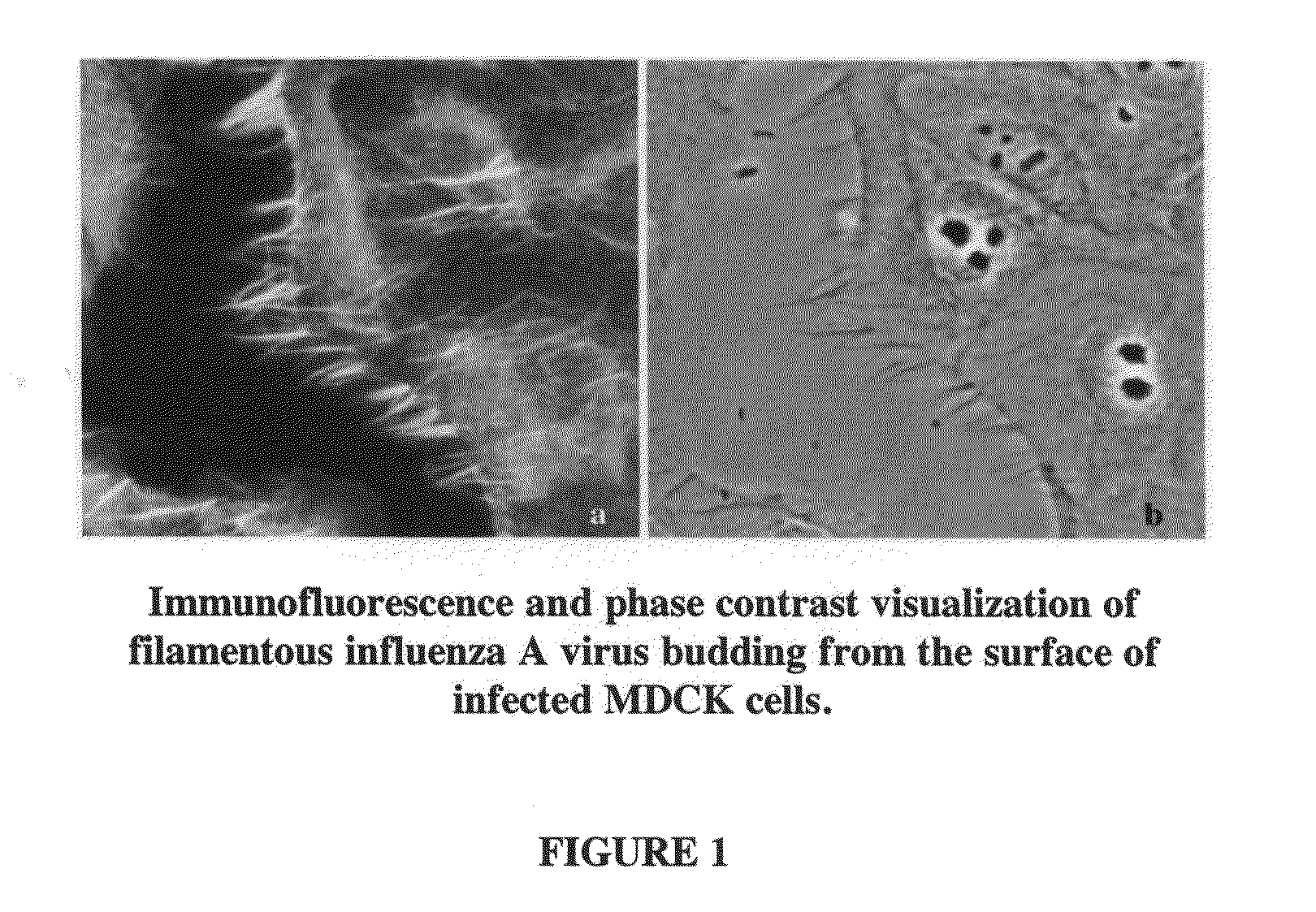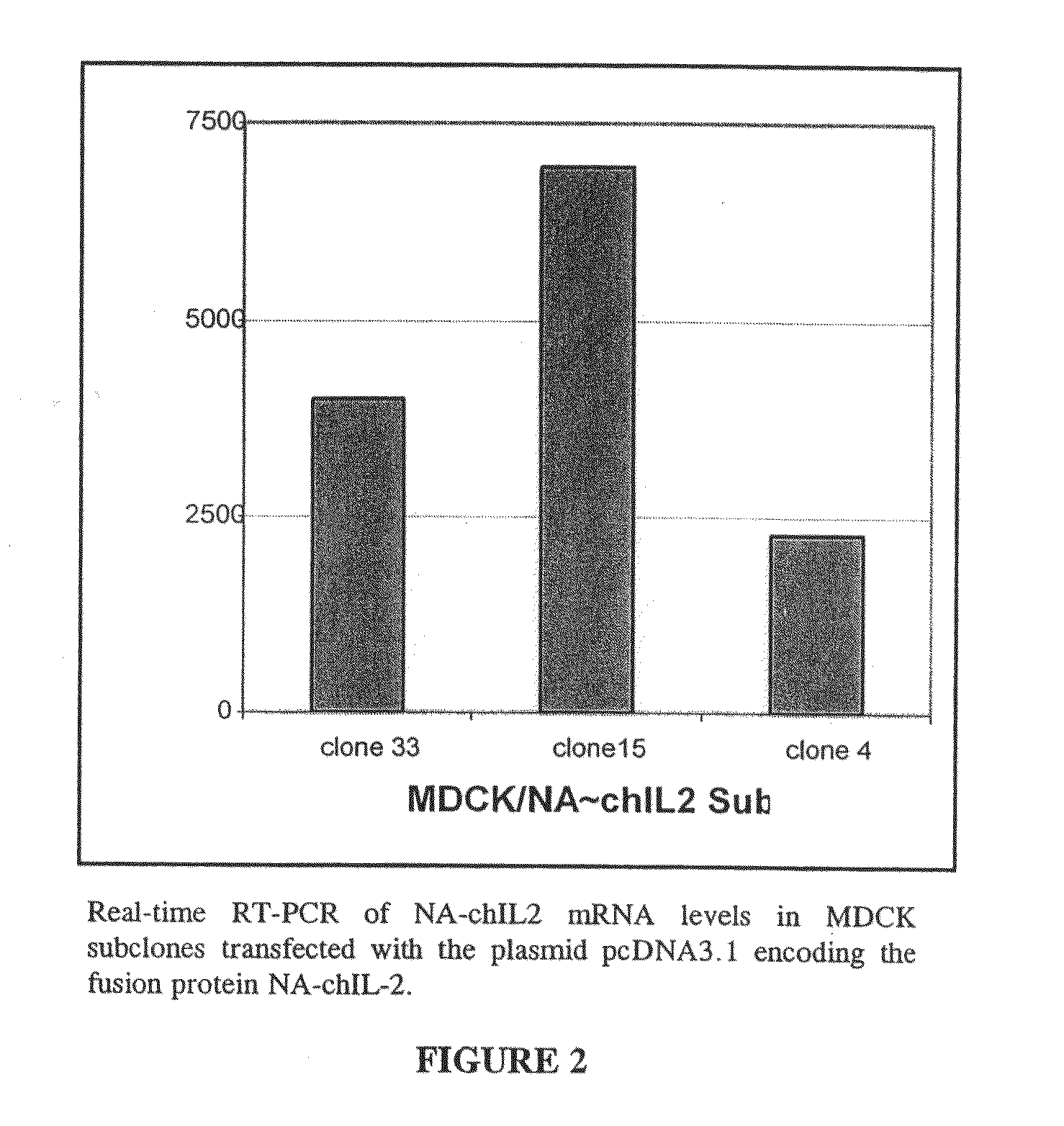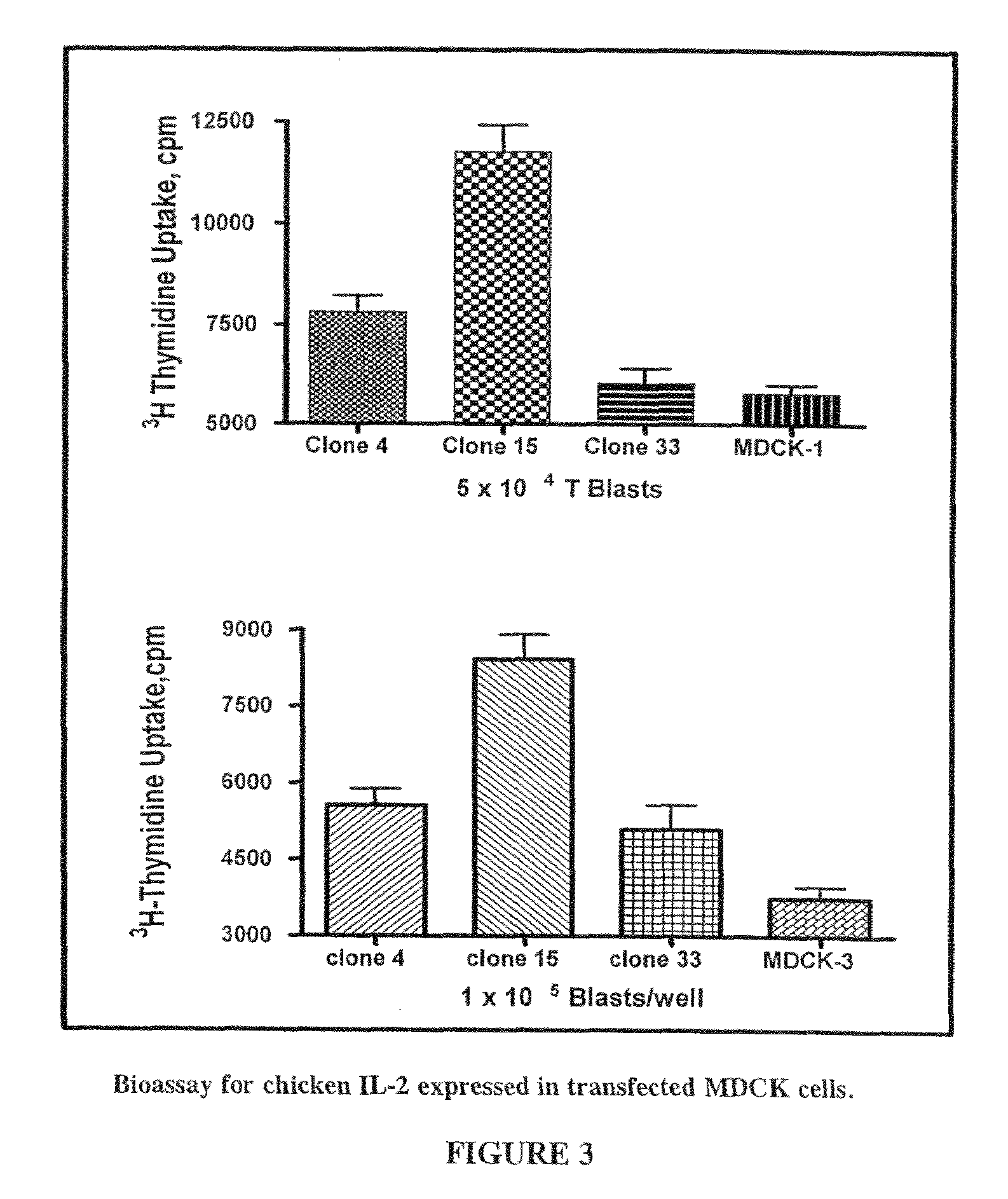Virus Vaccines Comprising Envelope-Bound Immunomodulatory Proteins and Methods of Use Thereof
a technology of immunomodulatory proteins and viruses, which is applied in the direction of antibody medical ingredients, peptide sources, peptides, etc., can solve the problems of host becoming tolerable, and achieve the effects of minimizing potential damage to other tissues, reducing toxicity, and large therapeutic indices
- Summary
- Abstract
- Description
- Claims
- Application Information
AI Technical Summary
Benefits of technology
Problems solved by technology
Method used
Image
Examples
example 1
Preparation and Validation of Influenza Vaccines (IVACs) Bearing Immunomodulators
[0112]This Example illustrates the constitutive expression of biologically active chicken IL-2 fused to the amino terminus of influenza envelope protein neuraminidase (NA˜chIL2) in MDCK cells as well as the incorporation of NA˜chIL2 into filamentous viral particles budding from MDCK / NA˜chIL2 cells. Furthermore, this example demonstrates that virus particles bearing NA˜chIL2 retain IL-2 bioactivity following inactivation with UV radiation and heat, inactivation protocols described herein.
[0113]Influenza A / Udorn / 72 is highly filamentous. In contrast to most laboratory-adapted strains of influenza virus which are found to produce virions of roughly spherical morphology and 100-150 nm diameter, the A / Udorn / 72 strain of virus was found to produce a large number of long filamentous particles (FIG. 1). The filamentous influenza A / Udorn / 72 virus was used for incorporation of avian immunomodulatory cytokines and...
example 2
Construction of Stable Cell Lines Constitutively Expressing Chicken Specific Cytokines Fused to Viral HA or NA
[0126]This Example illustrates the construction of stable cell lines constitutively expressing chicken specific cytokines fused to the cytoplasmic tail and transmembrane domains of viral HA or NA. Stable cell lines are assessed for stability of expression, retention of immunomodulatory activity and as a platform for incorporation into influenza virus particles.
[0127]Choice of Culture Platform for Vaccine Production. The use of animal cell culture is a viable substrate for propagation of influenza virus vaccines. An important factor for choosing between eggs and cell culture for vaccine propagation is the retention of vaccine antigenicity and potency. Subtle differences in antigenicity and in CTL responses have been reported for vaccine viruses propagated in eggs versus MDCK cells (Robertson, J. S., et al., J Gen Virol, 1991. 72 (Pt 11): 2671-7; Rocha, E. P., et al., J Gen Vi...
example 3
Construction of Stable Cell Lines Constitutively Expressing Murine Specific Cytokines Fused to Viral Envelope Proteins
[0133]This Example describes the construction of stable cell lines that constitutively express murine specific cytokines fused to viral envelope proteins of influenza. Mouse-specific immunomodulatory molecules can be incorporated directly into virus particles by fusing them to the transmembrane and cytoplasmic tail domains of the viral hemagglutinin and neuraminidase glycoproteins. These immunomodulatory molecules retain bioactivity and induce more robust and effective immune responses in mice and thus serve as a mammalian model for human vaccines bearing human immunomodulators.
[0134]A. Construction of Stable Cell Lines Constitutively Expressing Mouse IL2
[0135]Constitutive Expression of NA˜mIL2 in MDCK cells. An expression plasmid was generated based on the commercially available pcDNA3.1 in which the coding region of the mature form of the mouse IL2 is fused to the ...
PUM
| Property | Measurement | Unit |
|---|---|---|
| body weight | aaaaa | aaaaa |
| diameter | aaaaa | aaaaa |
| pH | aaaaa | aaaaa |
Abstract
Description
Claims
Application Information
 Login to View More
Login to View More - R&D
- Intellectual Property
- Life Sciences
- Materials
- Tech Scout
- Unparalleled Data Quality
- Higher Quality Content
- 60% Fewer Hallucinations
Browse by: Latest US Patents, China's latest patents, Technical Efficacy Thesaurus, Application Domain, Technology Topic, Popular Technical Reports.
© 2025 PatSnap. All rights reserved.Legal|Privacy policy|Modern Slavery Act Transparency Statement|Sitemap|About US| Contact US: help@patsnap.com



